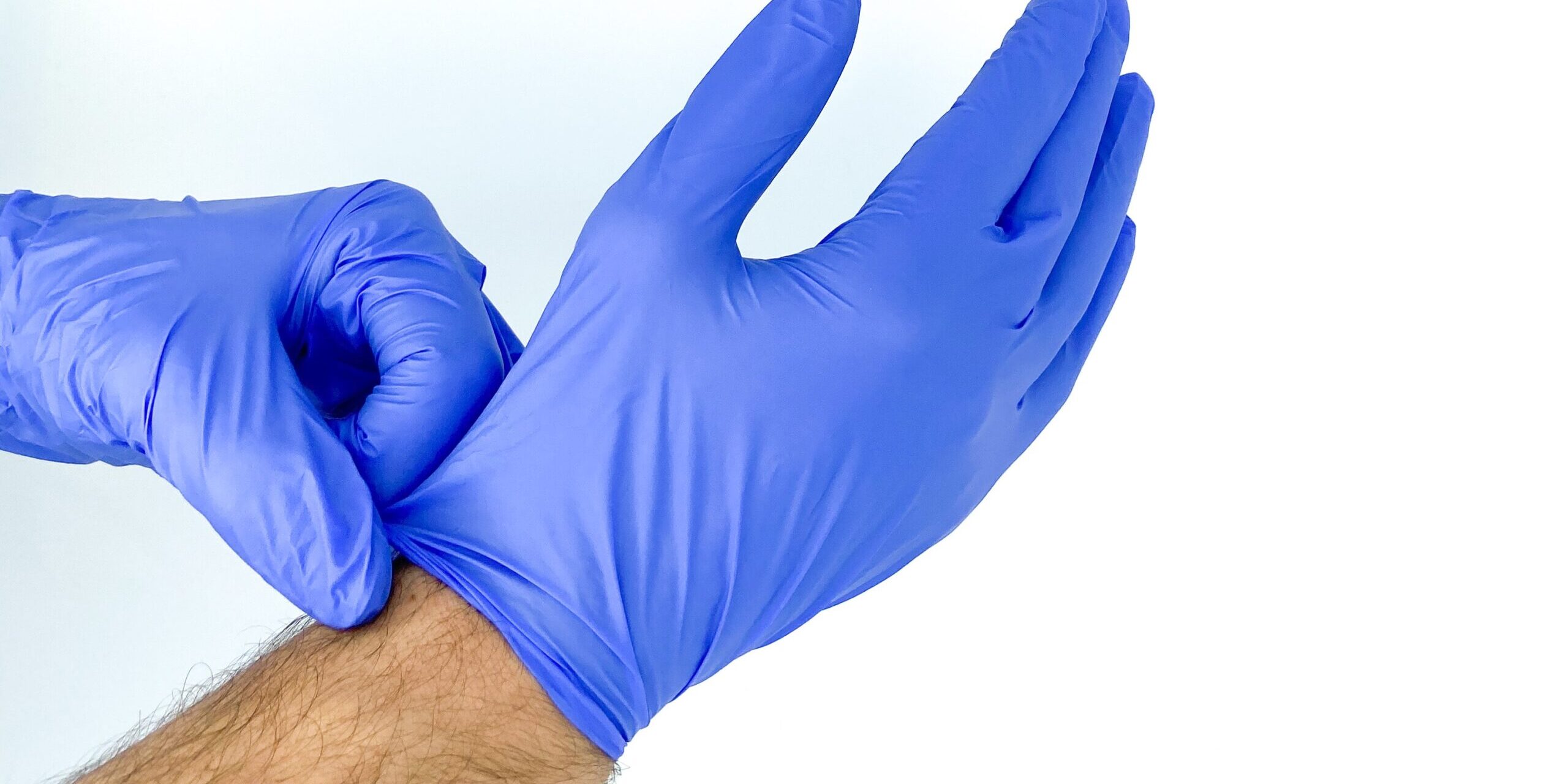When we think of dental supplies we may think of instruments like a perioprobe, explorers, and mouth mirrors. But an important, if not one of the most important supplies are medical gloves.
During exams or procedures, medical gloves protect both the wearer and the patients from the spread of microorganisms that could cause an illness.
Medical gloves fall into one of two categories: surgical or examination.
Surgical Gloves
Surgical gloves come in more precise sizes and are made to a higher standard than examination gloves. They’re are generally sterile as well.
Examination Gloves
Examination gloves are available as either sterile or non-sterile and aren’t as precisely sized as surgical gloves. The three most popular materials used to make medical gloves are latex, vinyl, nitrile, and polyethylene.
Nitrile
Nitrile gloves are commonly used for healthcare exams, food prep, janitorial services and by tattoo parlors. They are latex free, which makes them safe for those who are allergic to latex, and are also completely waterproof.
According to gloves.com, nitrile gloves are lightweight, breathable, flexible and have long-lasting durability. You’ll notice a greater puncture resistance, which is important for those working in the dental field. These gloves can also be less comfortable than latex, which is something to consider if you need to wear them for long periods of time. They’re good for high-risk infection situations.
Latex
Similar to nitrile, latex gives wearers durability and flexibility when working with patients. Latex gloves fit hands like a second skin which make them desirable in sensitive and precise applications, like a surgery.
Some healthcare providers avoid using latex gloves because they are an allergen and can be dangerous to some patients. Gloves.com also notes that latex gloves do not handle chemicals well, offering little protection against them.
Note that at least eight states have certain bans on latex gloves, but most are in relation to food services. Arizona, California, Connecticut, Hawaii, Illinois, Ohio, Oregon and Rhode Island have different bans on latex gloves, citing allergy concerns.
An article by Will Bauer for St. Louis Public Radio cites Maya Jerath, the clinical director of Washington University’s Division of Allergy and Immunology, saying that repeated exposure to latex can lead some to develop an allergy to it. The ban is set to go into effect in Illinois in 2024.
Vinyl
Vinyl gloves are made from synthetic polymer, a blend of synthetic rubber, plasticizers, and additives called PVC.
While vinyl gloves are latex free, writers for gloves.com say they aren’t as thick as nitrile, which can make them less durable. They’re resistant to water, oils, and fats. These are best for short-term tasks, such as quick examinations. Its looser fit and less elastic could compromise the protective barrier.
Glove.com recommends using vinyl gloves for repetitive assembly lines or manufacturing tasks, light clean-up jobs, and general light-duty use.
Are gloves FDA regulated
The FDA regulates medical gloves and reviews them to ensure that performance criteria, including leak resistance and biocompatibility, are met.
In December of 2016, the FDA banned powdered gloves due to risks of severe airway inflammation and hypersensitivity reactions. Disposable gloves must have FDA approval before they can be used for patient care.
How do I know which glove option is best for me?
We hope this article answers some of your questions about different types of gloves used by healthcare professionals. Based on what your needs are and outweighing the pros and cons of each type of glove, you should have a better understanding of which type would be best for you.
Paying more than $4.25 for a box of gloves? Stop leaving money on the table. Click Here for a FREE savings analysis and find out how much you can save on your healthcare supplies.






